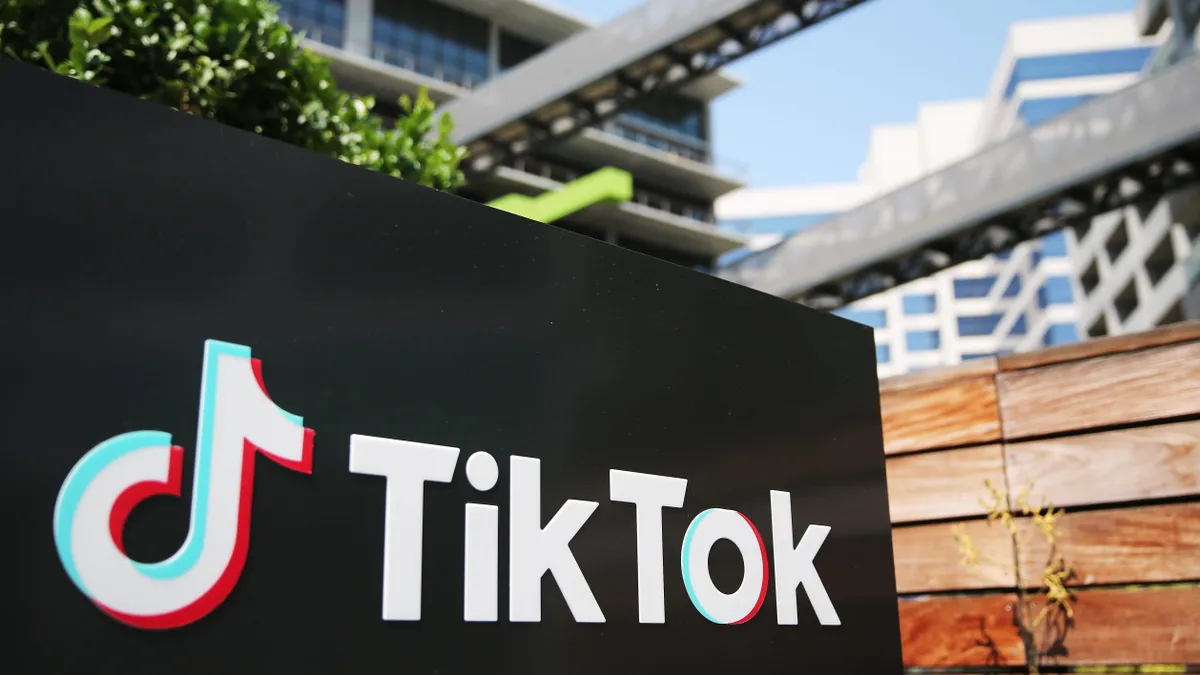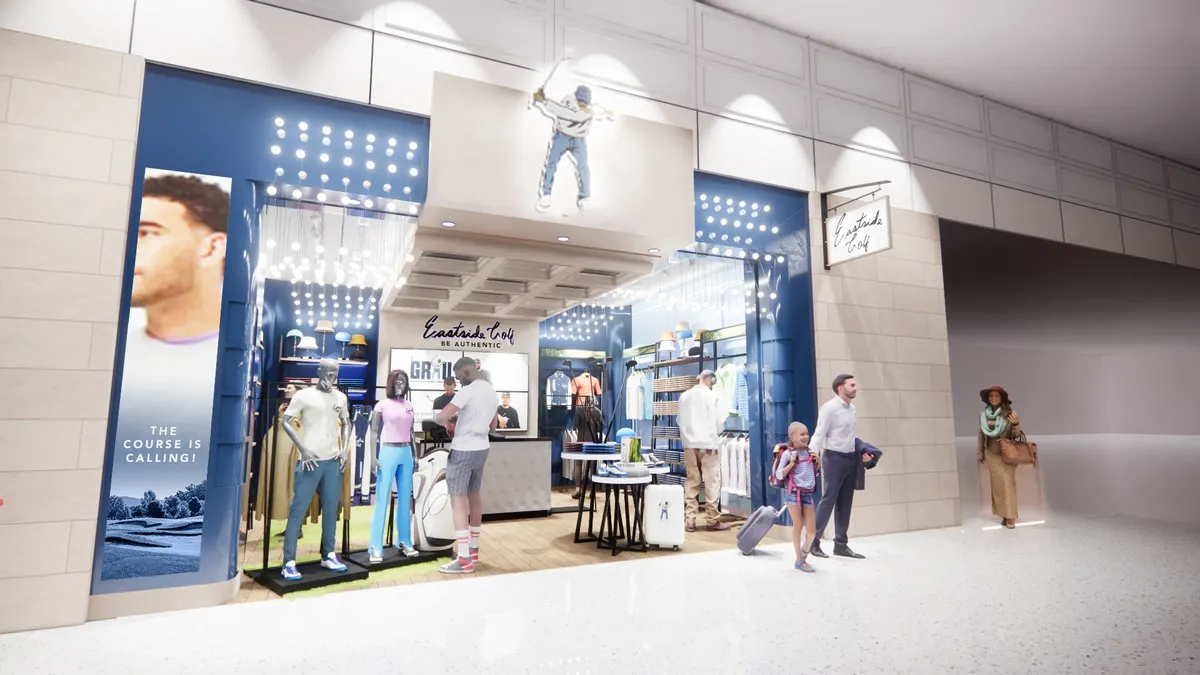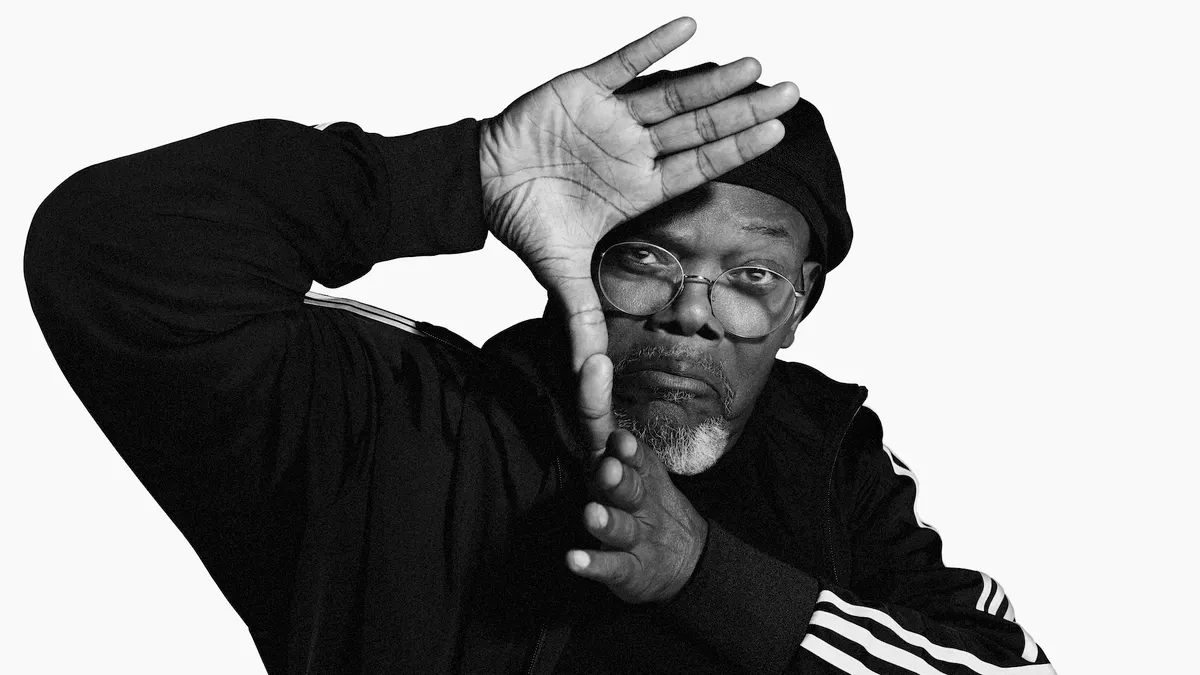Editor’s note: This story is part of a series on the trends that will shape the industry in 2021. You can find all the articles on our trendline.
The unique circumstances of the pandemic have caused online sales to balloon, seemingly overnight. As retailers were forced last spring to temporarily shutter their stores, either by choice or by government mandate, consumers shifted their spending online.
E-commerce sales in March jumped to $70.1 billion from $61.7 billion in February, and were up 18.2% from the prior year, according to the Department of Commerce.
As a result, retailers across the industry adjusted their strategies to meet the increased demand to their digital channels. Several ramped up fulfillment options, like curbside and in-store pickup. At Home piloted buy online, pick up in store at 28 stores in January with a gradual rollout to other markets throughout the year. In response to more sales happening online, though, the retailer expedited those plans in order to serve its customers. Target's same-day services — pick up, drive up and Shipt — helped drive record growth over the year. And Lowe's in September announced it would introduce pickup lockers to most metro areas by the Thanksgiving holiday.
On the other hand, direct-to-consumer brands, which by and large operate nearly entirely online, were already well-positioned to gain as consumers spent more time, and money, online.
But physical stores, something some DTCs vowed against in their early days, remain a valuable asset for digital brands.
Why DTCs move offline
DTC brands saw an opportunity selling directly to the consumer online, cutting out the middleman and creating unique experiences for their customers.
"Direct-to-consumer brands obviously found great traction and great success through their e-commerce and digital platforms. But that has become a pretty crowded space," Tyler Higgins, leader of the retail practice at AArete, said. "They started to realize that even despite the pandemic — the pandemic definitely slowed everybody's plans down — that brick-and-mortar stores hold just some unique value that is near impossible for them to gain just through kind of a digital footprint."
The cost to acquire customers online eventually becomes prohibitively high. Among the few DTC brands that have gone public in recent years, high marketing costs are a commonality. Casper's sales and marketing expenses reached $154.6 million in 2019, a 22.5% increase from the prior year. Chewy spent $426.9 million on advertising and marketing in 2019, up 8.6% from the previous year. And Wayfair's advertising expenses hit $1.1 billion in 2019, up 41.5% year over year.
Although media costs came down during the pandemic, it only offered a temporary solution. Brands create an additional marketing channel and opportunity to acquire customers by opening a physical store.
Brick-and-mortar stores are "brand-building locations," Michael Brown, a partner in the consumer practice at Kearney, told Retail Dive. "They need to be in high-traffic, high-density markets of the target consumer to be able to build that brand affinity and that brand experience. They're billboards."
What's the point?
While direct-to-consumer brands are moving further offline, the function of their spaces oftentimes differs from that of traditional retailers.
DTC brands have a smaller footprint — in terms of store count and square footage — than more traditional retailers. Several brands have also adopted a showroom, inventory-free model where consumers can view and try out products in person to then go online and order them.
But with the pandemic drastically cutting back on how often consumers venture out to stores, brands may be forced to adapt their models to what the consumer wants.
"I think the ability to walk away with a product that same day is always attractive. Being more convenient to the customer and being able to provide them with the same-day service and a product I think is only a benefit," said Ben Lazzareschi, executive vice president of Retail at JLL. "That added level of customer experience and convenience and ability for customers to kind of hold and feel and take home their product that same day is really only a good thing, but I don't think that necessarily is going to replace DTC."
Offering merchandise in stores, however, would force digitally natives to completely rethink their operating model and supply chains. Alternatively, Brown actually suggests traditional retailers should be the ones taking note from DTCs with their showroom models.
"I think the showroom model is one that needs to be adopted by traditional retailers as well, because what's happening with the direct-to-consumer brands is they've built a fulfillment network that is very efficient in shipping goods to a consumer's home," he said. "A fulfillment network that has to send large quantities of product to a store to be displayed to maybe be sold out of that location, or maybe has to be shipped from that location to consumers to get it out of the store, is a completely different operating model. So [DTC brands] built very effective operating models based on shipping goods to the consumers' homes from large fulfillment centers, and they need to continue to leverage that operating model."
However, determining a store's purpose isn't one-size-fits-all, and the showroom model may go away for some brands, while others that are simply using stores as a means for brand awareness will likely remain merchandise-free.
Follow the consumer
While much of the retail industry works to rightsize its footprint (8,736 stores shuttered in 2020, according to Coresight Research), it opens opportunities that otherwise wouldn't have been made available to smaller brands, like DTCs.
But that doesn't necessarily mean direct-to-consumer brands will move into the massive stores retailers are leaving downtown.
"The challenge with some of those large format, downtown, high-profile urban locations is significant operating costs and occupancy costs for something like that," Lazzareschi said. "By and large, most direct-to-consumer brands — they're kind of showrooms or they have limited amounts of products," eliminating the need for such large spaces.
When the pandemic took hold and made typical in-person activities like eating out and shopping in stores less desirable, it ignited a trend of residents moving out of cities and to the suburbs. Brands in turn are looking to follow their base outside of urban markets.
"There's no doubt that we have seen an increased focus on suburban markets for retailers with the work-from-home strategy … premium suburban high streets and premium suburban pedestrian retail streets have become more of a focus and float to the top of the targeted sub-markets and markets for expansion," Lazzareschi said. Higgins, who categorizes this as "the second wave" of brick and mortar for DTC brands, said pop-ups may be used even more now than before as "testing grounds for a certain city."
Once consumers begin moving back to cities, which Lazzareschi predicts will happen, the focus will shift to premium streets in urban markets again. Even now, Higgins added, the focus remains on popular locations like SoHo, Boston Seaport and San Francisco for DTC brands looking to open their first location.
But even with the vaccine rollout well underway, the pandemic is still raging on, and the return to "normal" remains unclear. Nonetheless, now is when brands should be looking to forge deals with landlords.
"It's actually a great time to be looking. If you are a good credit tenant with a great brand and have a successful operational history, I mean landlords right now are making deals in most markets with more concessions than they have been in years," Lazzareschi said. "The smart ones, frankly, will be doing long-term deals and leveraging the opportunities that are available now with landlord concessions."
But for other brands less eager to pull the trigger and open more stand-alone stores at the moment, Higgins expects to see more partnerships formed with traditional retailers. Casper, which formed over 20 partnerships with retailers like Target, Costco and Sam's Club, in November added Nordstrom to that list. And Target has welcomed a growing number of DTC brands to its shelves recently, including Function of Beauty and Winky Lux.
"Can they enhance partnerships with large existing brands?" Higgins said. "Obviously, that comes at a cost, but the size that they want to be in such a crowded space, that's one way to try to see a huge revenue growth that a lot of these brands are targeting."
How many stores do digital brands need?
Traditional retailers have moved to close stores over the past several months in order to rightsize their footprints. Macy's and H&M, for example, have announced plans to shutter hundreds of locations.
So as DTC brands look to expand their footprints, the question remains: How many?
Warby Parker already operates well over 100 stores, and Casper previously announced plans to open around 200 stores across North America. E-commerce retailers were projected to open some 850 stores over the next several years, according to a late 2018 report from JLL.
While the pandemic has caused some brands to rethink just how many stores they need, Brown believes the "right number" to operate for a DTC brand lies somewhere in the 200 to 400 range.
It also depends on the category in which the brand operates. Casper's goal of hundreds of stores may be rationalized by the fact that a mattress is a purchase consumers oftentimes want to touch and feel before buying, whereas categories like beauty or apparel may not need as many.
But even as some brands reconsider the sweet spot when it comes to store count, the number of deals being made will likely accelerate to pre-pandemic levels in the months ahead.
"There's a lot of discussion that retailers, including DTC brands, are going to be stepping on the accelerator in the middle to end of this year to focus on stores getting opened in 2022," Lazzareschi said. "We anticipate that they are going to be expanding at pre-pandemic levels."
Correction: This story has been updated to reflect the correct spelling of Tyler Higgins' surname.





















